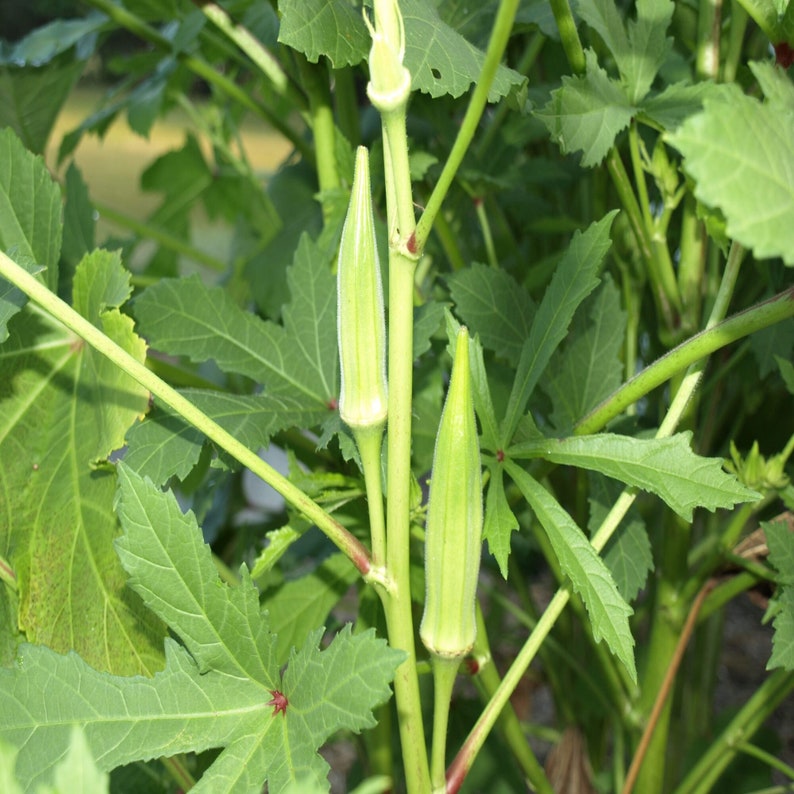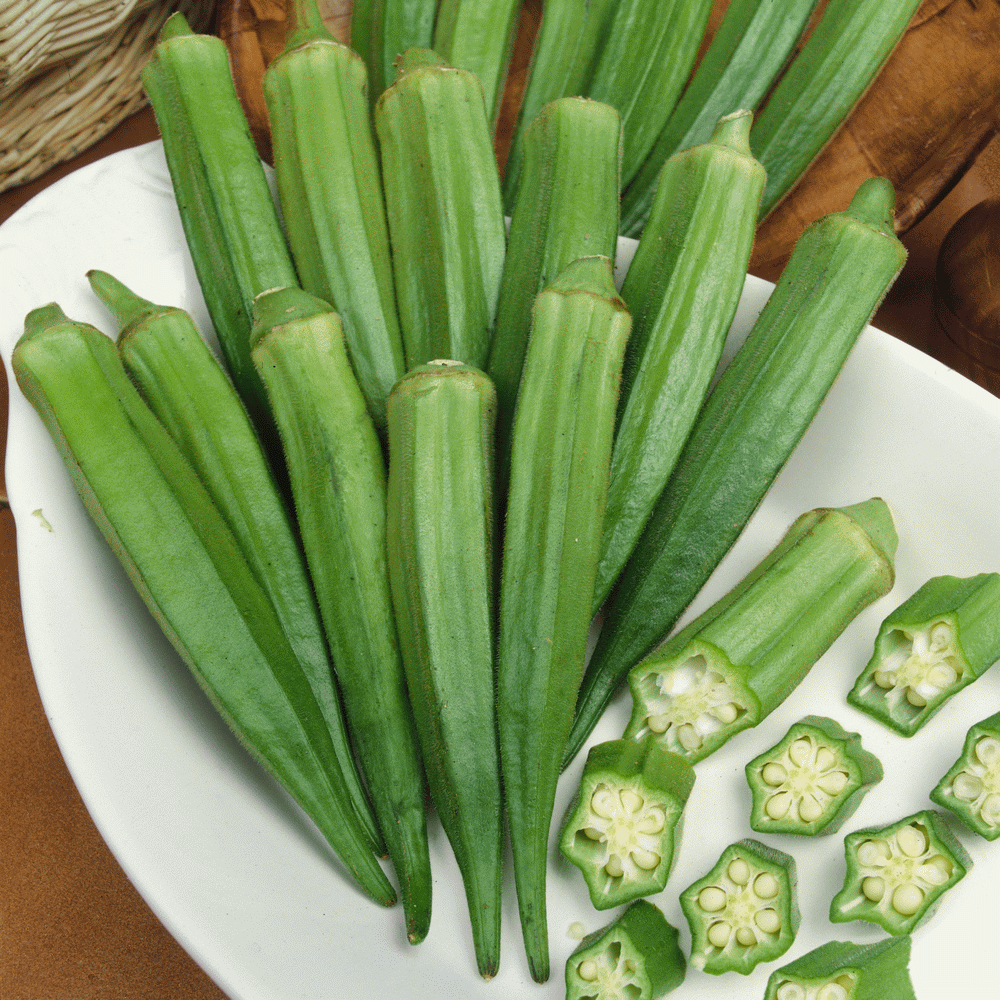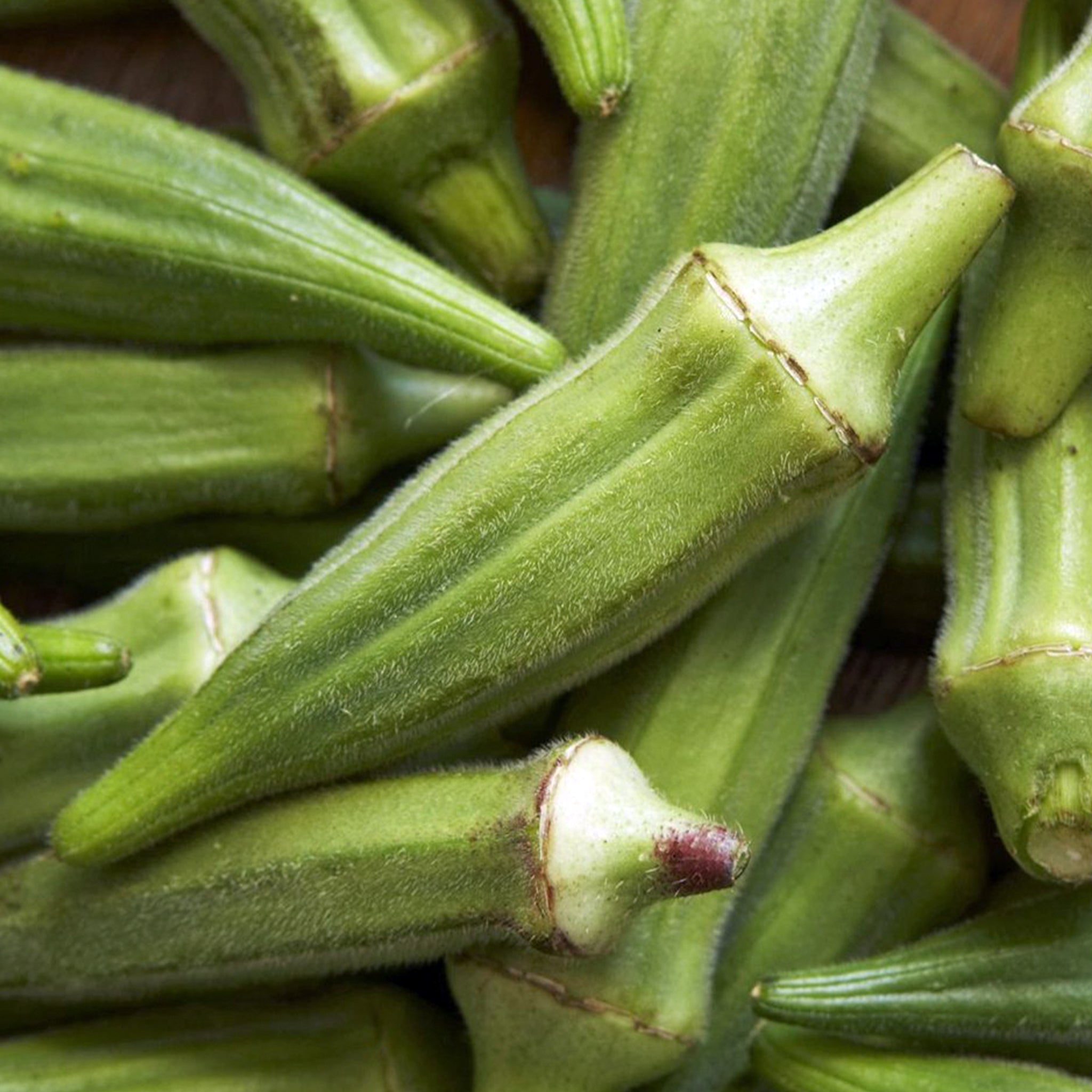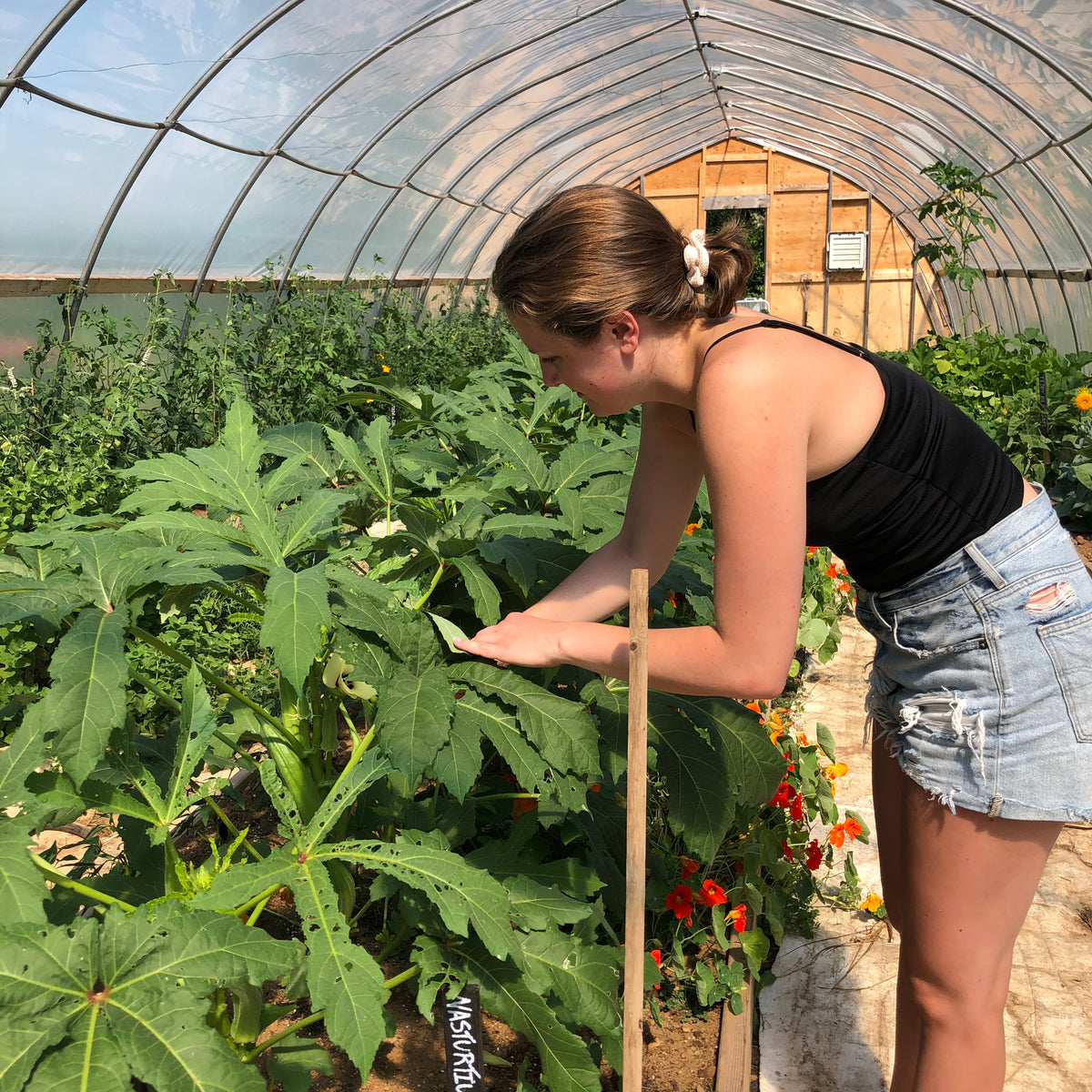

Okra should be mowed or pruned to 6 to 12 inches above the soil line. Ratooning is the process of cutting the stem of a plant, causing it to push out new growth and produce another crop later in the fall. If harvest tapers off and okra slows or ceases flower production, then gardeners should try ratooning spring-planted okra (usually around mid-July to mid-August). Ratooningĭuring the hottest and often driest parts of the summer, okra may slow down production. It is important to supply additional nitrogen late in the season at the time blooms are concentrated at the top of the plant. More applications of calcium nitrate may be needed later, depending on rainfall and how long okra is expected to produce. Sidedressing should occur at 3 to 4 weeks after planting and again at 6 to 8 weeks after planting. 5-0-0) per 1,000 square feet or 1 to 2 pounds per 100 feet of row. Okra should be sidedressed with 3 to 6 pounds of calcium nitrate (15. The use of additional nitrogen should be avoided on vigorous plantings until fruiting begins to manage plant growth and ensure pod production. The okra plant has a sensitive balance between vegetation (leaf production) and reproduction (pod production). If a soil test has not been taken, apply 25 to 50 pounds of 10-10-10 before planting or other fertilizer that would give between 2½ to 5 pounds of nitrogen, phosphorus, and potassium per 1,000 square feet. Information on soil testing is available in HGIC 1652, Soil Testing.įollow the results of a soil test to maintain a soil pH between 5. Burgundy (red okra variety but will turn green when cooked)Ī soil test is always the best method of determining the fertilization needs of the crop.Choppee (Clemson Heirloom Collection- clemson.Smith, ©2018 HGIC, Clemson Extension Recommended Cultivars This may help however, seedling death may still occur if the seed is planted in cold soil.Ĭlemson Spineless 80 okra produces dark green pods without spines.īarbara H. Many gardeners soak the seed in water before planting to improve germination. It is important that the soil be well-drained. The crop can be grown on all soil types, although sandy loam soils high in organic matter are the most desirable.

If soil temperatures are less than 65 ☏, at a soil depth of 4 inches, gardeners should hold off on planting until soil temperatures are warmer. The optimum soil temperature for seed germination lies somewhere between 70 to 95 ☏, so gardeners will want to check the soil temperature at a depth of 4 inches before planting. When planting okra, gardeners want to ensure that the soil temperature is warm enough so that seeds germinate and begin to grow, as cool soils can lead to slow growth and seedling diseases. Okra grows best at temperatures between 75 and 90 ☏. This variety is the best available to cope with our UK climate.Millie Davenport, ©2018 HGIC, Clemson Extension Okra can be grown in greenhouse soil or in large pots & grows to between 80-90cm high and can be eaten raw in salads but is usually added to stews/soups or deep-fried. The interesting and attractive plants (actually Hibiscus esculentus) are not hard to raise and can be grown just like tomatoes, either in the greenhouse bed or in 8 or 10 in. Alternatively, they can be used alone as a cooked vegetable. It is also a popular vegetable in the south of India, where it is mostly used in dry curries.Īlso known as “Ladies’ Fingers”, this is rarely seen outside Indian restaurants, but the ribbed, pointed, fleshy, dark green seed pods are delicately flavoured and invaluable for adding body and interest to soups and casseroles. It is a culinary tradition in the southern states of America, where it is used both as a side dish and in a variety of recipes including gumbos and stews. This unusual member of the hibiscus family has an important part in African, Mediterranean and Oriental cuisine. Originally, Okra comes from northern Africa, where it still grows wild. It was introduced in 1939 and immediately won the AAS award in that same year.

Okra 'Clemson Spineless' is a spineless heritage variety that was developed by the horticultural research department of Clemson University in South Carolina.
CLEMSON SPINELESS OKRA HOW TO
Monty Don: How To Sow A Wildflower Meadow.

Swiss Chard Bright Lights Microgreen Seeds.Garlic Chives/Chinese Leek Microgreen Seeds.


 0 kommentar(er)
0 kommentar(er)
